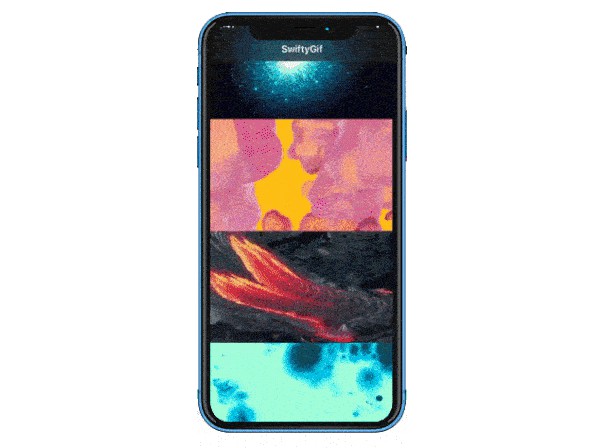gifu
Gifu adds protocol-based, performance-aware animated GIF support to UIKit. (It's also a prefecture in Japan).
⚠ The master branch works with Xcode 9 and iOS 11, which are both in beta. Use v2.0 for the stable version.
High-performance animated GIF support for iOS in Swift.
Install
Carthage
- Add the following to your Cartfile: github "kaishin/Gifu"
- Then run carthage update
- Follow the current instructions in Carthage's README for up to date installation instructions.
CocoaPods
- Add the following to your Podfile: pod 'Gifu'
- You will also need to make sure you're opting into using frameworks: use_frameworks!
- Then run pod install with CocoaPods 0.36 or newer.
How It Works
Gifu does not require using the built-in GIFImageView subclass. The Animator class does the heavy-lifting, while the GIFAnimatable protocol exposes the functionality to the view classes that conform to it, using protocol extensions.
The Animator has a FrameStore that only keeps a limited number of frames in-memory, effectively creating a buffer for the animation without consuming all the available memory. This approach makes loading large GIFs a lot more resource-friendly.
The figure below summarizes how this works in practice. Given an image
containing 10 frames, Gifu will load the current frame (red), buffer the next two frames in this example (orange), and empty up all the other frames to free up memory (gray):

Usage
There are two options that should cover any situation:
- Use the built-in
GIFImageViewsubclass if you don't need to combine GIF support with another image library. - If you need more flexibility and composability, make your class conform to
GIFAnimatable. In practice, anyUIViewsubclass would do, since you get most of the required properties for free. For best results, make yourUIImageViewsubclass conform toGIFAnimatableto get access to other features such as intrinsic content size.
GIFAnimatable
The bread and butter of Gifu. Through protocol extensions, GIFAnimatable exposes all the APIs of the library, and with very little boilerplate, any class can conform to it.
class MyImageView: UIImageView, GIFAnimatable {
public lazy var animator: Animator? = {
return Animator(withDelegate: self)
}()
override public func display(_ layer: CALayer) {
updateImageIfNeeded()
}
}
That's it. Now MyImageView has access to all these methods and properties:
prepareForAnimation(withGIFNamed:)andprepareForAnimation(withGIFData:)to prepare the animator property for animation.startAnimatingGIF()andstopAnimatingGIF()to control the animation.animate(withGIFNamed:)andanimate(withGIFData:)to prepare for animation and start animating immediately.frameCount,isAnimatingGIF, andactiveFrameto inspect the GIF view.prepareForReuse()to free up resources.updateImageIfNeeded()to update the image property if necessary.
Furthermore, you can make any class GIF-animatable, starting with UIView subclasses:
class CustomAnimatedView: UIView, GIFAnimatable {
public lazy var animator: Animator? = {
return Animator(withDelegate: self)
}()
override public func display(_ layer: CALayer) {
updateImageIfNeeded()
}
}
You can also make UIKit classes conform using associated objects may you wish:
import UIKit
import Gifu
extension UIImageView: GIFAnimatable {
private struct AssociatedKeys {
static var AnimatorKey = "gifu.animator.key"
}
override open func display(_ layer: CALayer) {
updateImageIfNeeded()
}
public var animator: Animator? {
get {
guard let animator = objc_getAssociatedObject(self, &AssociatedKeys.AnimatorKey) as? Animator else {
let animator = Animator(withDelegate: self)
self.animator = animator
return animator
}
return animator
}
set {
objc_setAssociatedObject(self, &AssociatedKeys.AnimatorKey, newValue as Animator?, .OBJC_ASSOCIATION_RETAIN_NONATOMIC)
}
}
}




